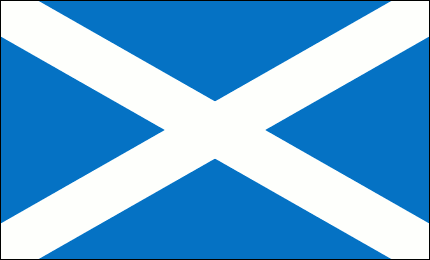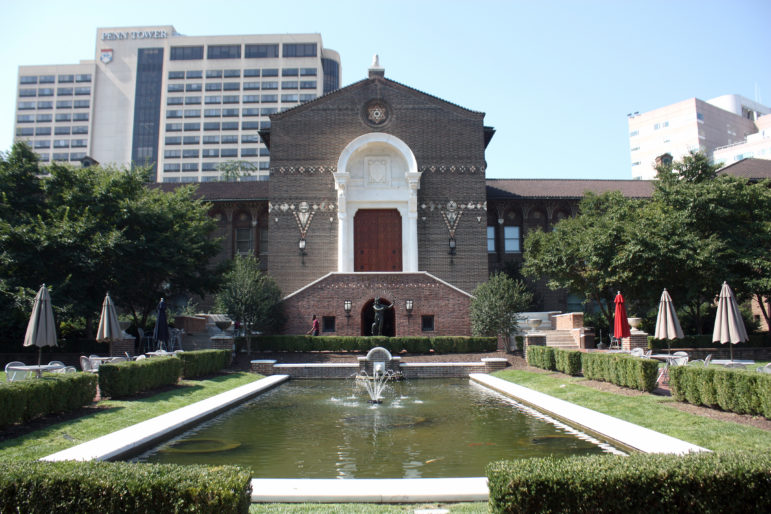
Flog of Scotland
EDINBURGH, Scotland – The Witches of Scotland have launched a new campaign to establish a memorial museum that recognizes and honors the thousands of people, mostly women, who were tried and executed for crimes of “witchcraft” in Scotland between 1563 and 1736.
As we first reported in September of 2020, the Witches of Scotland have sought to gain pardons, an apology, and the creation of a national monument for those who were unfairly prosecuted in Scotland.
The Witches of Scotland was founded by QC Claire Mitchell and writer Zoe Venditozzi to seek justice for those who fell victim to the “witch hunts” that took place between the 16th and 18th centuries. The number of those sentenced to death in Scotland is believed to be as much as five times higher than in other European countries during the same period.
QC Mitchell and Venditozzi also host a podcast that explores “the history, law and stories of those accused of witchcraft.”
Venditozzi is quoted in The Scotsman as saying, “During the course of our podcasts, we’ve interviewed a few witch trial museum curators and educators and think that a museum would be a great idea, and indeed an asset to Scotland.
“We’ve come to realise there’s a real gap in our national education about the witch trials and think a museum would help Scots and visitors to get an accurate sense of what created the atmosphere of the trials and how we can avoid anything of that nature happening again.”
She emphasized the importance of understanding and remembering history, “I’m very passionate about people having access to the facts of their past and think a museum would be a great opportunity to showcase how forward-thinking we can be as a nation whilst being thoughtful about our past.”
Venditozzi continued, “The museum could build on the great work of the interactive database and cover stories and documentation from all over Scotland, telling the stories of the accused and humanising their terrible ordeals. We wouldn’t want to see displays of instruments of torture or bubbling cauldrons.”
QC Mitchell explained some of the outreach they have done with government officials, “We’ve had talks with several politicians who each have an interest in a museum in their own area due to their unique links and stories.”
She also highlighted that while future plans on location have not been decided on, and the intent to possibly model it on other museums, “Whilst we’re not particularly wedded to where the museum is built, we’re very focused on how the museum should be presented. We think it should be vibrant and engaging and not at all relying on the pointed hat imagery that’s often associated with the witches. The Salem Witch Museum has a tremendous approach, for example.”
The Witches of Scotland have held up the decision to formally pardon those tried and executed for crimes of “witchcraft” in Salem, Massachusetts as a landmark case to help encourage Scotland to do the same.
♦ ♦ ♦

Penn Museum – Image credit: Mefman00 – CC0
PHILADELPHIA – Last month the University of Pennsylvania’s Museum of Archeology and Anthropology issued an apology for the skulls held in its possession as part of the Samuel G. Morton Cranial Collection.
The new director for the museum, Dr. Christopher Woods, said in a press statement released by the Penn museum:
The Penn Museum and the University of Pennsylvania apologize for the unethical possession of human remains in the Morton Collection.
It is time for these individuals to be returned to their ancestral communities, wherever possible, as a step toward atonement and repair for the racist and colonial practices that were integral to the formation of these collections.
The Morton Collection is comprised of over 1300 skulls that were collected by Dr. Samuel Morton, who believed that the size of the cranial cavity was indicative of intelligence. Dubbed by some the “Father of Scientific Racism” due to his 1839 book, Crania Americana, which asserted that larger cranial cavity size reflected greater intelligence and contributed to the support of white supremacy ideology.
Morton’s racist findings have long been discredited, and completely disproven by the scientific community.
In addition to Morton’s racist ideology, how he acquired the remains are also at issue. Most came from grave robbers, some are believed to have been removed from a burial site for poor African Americans in Philadelphia, and still more taken from a graveyard in Cuba that held the remains of African slaves. None of the remains were obtained with consent from relatives or family.
“It was the direct result of the killing of George Floyd, the rise of Black Lives Matter,” said Woods in an interview with NPR. “This is what brought this issue to the forefront.”
The Penn Museum formed the Morton Collection Committee (MCC) made up of museum officials, staff, anthropologists, and students in August of 2020 “to evaluate the next steps towards repatriation or reburial of the crania of enslaved individuals within this Collection.”
The MCC also sought community involvement and consultation on the process of how repatriation and reburial should be implemented. They issued their report and recommendations last month.
Among the recommendations that the MCC advised: acknowledging remains that were unethically obtained; apologizing to each community as determinations of origin were assessed; return of remains to the communities they originated from whenever possible; reassess its practices of collecting, storing, displaying, and researching
human remains; and form a repatriation committee, under BIPOC leadership.
The MCC also emphasized:
The Committee recommends that the Museum should institute and develop a process which is transparent, repeatable, and lasting in order to handle the evolving scope of assessment of repatriation and reburial requests.
The Committee further recommends that the Museum should ensure that Community
consultation is integrated into the processes of assessment and action at every step.
Consultation will be required in order to identify the appropriate stakeholder groups, to
understand their wishes and objectives, and to achieve a mutually satisfactory outcome.
The process to be used for repatriation and reburial intends to be modeled after the Native American Graves Protection and Repatriation Act (NAGPRA).
One huge hurdle for repatriation is determining where many of the remains originated. Unfortunately, Morton kept very few records, except for identifying race.
“The pseudo-scientific research that he conducted was to justify white supremacist views of race,” Woods says. “That was the one element of this that he was interested in. So those individuals are identified by race.”
- While most mandates and restrictions due to the COVID-19 pandemic have ended, some festivals had already geared up for virtual events. Circle Sanctuary is still planning to hold its 41st annual Pagan Spirit Gathering completely online this year. They have also upgraded their satellite internet system at Circle Sanctuary to provide better transmission of the scheduled events. PSG runs June 25-27 and will offer a full schedule of workshops, ceremonies, and musical entertainment.
- A petition on the U.K. Parliament website calls for the government to “Recognise Pagan handfasting as a legal form of marriage in England and Wales” has garnered just shy of 10,000 signatures. Last year civil partnerships of opposite-sex couples were granted as being legitimate, and currently, another couple is seeking to get humanist wedding ceremonies also recognized. A minimum of 10,000 signatures is required before the government is required to respond to the petition. Should the petition manage to have 100,000 signers, Parliament would be obliged to consider the matter for debate.
- A paper published in the journal, “Conservation Science and Practice” outlines the case for reintroducing jaguars (Panthera onca) back into the U.S. southwest. While there have been several sightings of jaguars north of the Mexico-U.S. border, no breeding pairs have been observed. Researchers comprised of environmental groups and scientists are urging U.S. wildlife officials to consider reintroduction since the animals have lost roughly half of their habitat in Central and South America due to development. The mountains of Arizona and New Mexico were once part of the range and habitat of jaguars, albeit a small part–just less than one-tenth of 1%. In order for the animals to be successfully re-established in the southwest, human intervention would be required with habitat assessments, possible breeding programs, and selling rural ranchers on the idea who would likely oppose such a plan.
- Gulf News reports that officials in Dubai, United Arab Emirates (UAE) have confiscated roughly 150 lbs. of materials over the past three years they believe were being brought into the country for “witchcraft” or “black magic” practices. Any form of magical practice is illegal within the UAE and can result in fines, incarceration, or both. The items detailed as possibly being used in such practices were listed as animal skins, talismans, bones, hair, and amulets, and also included knives, needles, vials full of animal blood and other liquids, animal hair, pieces of metal, rings, and sorcery books.
- A three-part series of videos, The Future is a Safe Place Hidden in My Braids, that were written by Roma Romanian artist Mihaela Drăgan together with Roma witch Mihaela Mincă, incorporates traditional Roma rituals expresses political viewpoints that reflect anti-racism, and anti-discrimination. “Identifying with Mincă, a Roma witch, was a political, feminist act for me,” Drăgan told The Calvert Journal. “I wanted to work with Roma witches to develop these spells that can help us heal the traumas we’ve faced in our lives.” The program’s airing coincides with the Roma Resistance Day, which marks the anniversary when 600 Roma captives in 1944 in the Auschwitz-Birkenau concentration camp complex armed themselves with hammers and shovels and barricaded themselves in buildings in a bid to fight back against a planned Nazi execution of 6,000 Roma prisoners.
Positively Noteworthy
Last week, the New River Gorge in West Virginia became the newest national park in the U.S. It holds the distinction of being the first national park in West Virginia.
Tarot of the week by Star Bustamonte
 Deck: Shadowscapes Tarot, by Stephanie Pui-Mun Law, text by Stephanie Pui-Mun Law and Barbara Moore, published by Llewellyn Publications.
Deck: Shadowscapes Tarot, by Stephanie Pui-Mun Law, text by Stephanie Pui-Mun Law and Barbara Moore, published by Llewellyn Publications.
Card: Major arcana (XIV) Temperance
The week ahead holds the promise of balancing opposing forces equally. There is the potential for “moderation of extremes,” as well as deploying universal powers in ways that serve. Conversely, diametrically opposed forces kept apart have the potential to create stasis or stagnation and prevent unification.
Decks generously provided by Asheville Pagan Suppl
The Wild Hunt is not responsible for links to external content.
To join a conversation on this post:
Visit our The Wild Hunt subreddit! Point your favorite browser to https://www.reddit.com/r/The_Wild_Hunt_News/, then click “JOIN”. Make sure to click the bell, too, to be notified of new articles posted to our subreddit.